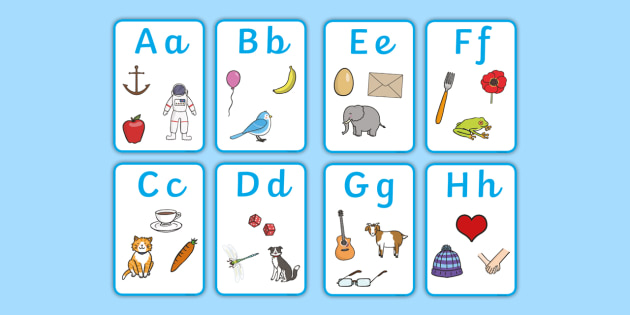Young readers start their journey towards literacy by recognising the relationship between alphabets and their sounds. The first step towards this is Letter recognition. This involves two concepts:
-To be able to distinguish between 26 alphabets
-To be able to say the letter name
Why Learning Letter name is important:
1. Learning letter name makes learning the sound associated with the letters easier. Children who know letters are able to correlate the alphabet name with its sound.
2. Children who can recognise and name the letters are able to start reading quickly
3. As the children learn more words, they are motivated to read even more
What to teach first – Lowercase or Uppercase
Often parents debate on whether to teach lowercase or uppercase first. Frankly there are pros and cons to both approaches. Those who introduce the alphabet with Uppercase reason that its easier to identify, all alphabets in uppercase can be easily distinguished (except M/W which could cause some confusion). The capital letters are mostly formed in straight strokes which are easier to write than the curves of small letter.
Those who argue in favour of the lowercase say that as most of the text is predominantly in lowercase, so when a child starts to read, he needs to recognise the lowercase in order to be comfortable with reading. So visual recognition of lowercase letters will be more advantageous. Whichever method you choose to go with for your child, here are some activities to help recognise the Uppercase/Lowercase:
1. When you start teaching the Alphabet, teach both uppercase and lowercase side by side and tell your child that they work as partners. Make Wall displays, flashcards with both letters written side by side as below

2. Play matching games in which the child has to match the Uppercase letter with the lowercase letters. You can cutout your own alphabet cards or make use of plastic / magnetic alphabets. You can use these printable from Reading Rockets for letter matching activity https://www.readingrockets.org/content/pdfs/k22-24.pdf
3. Get the child to make alphabets from playdough or trace in magic sand and then say out the sound that the letter makes
4. Play Bingo with your child. You can make the Bingo tickets using just uppercase or lowercase letters or even a mixture of letters as per your child’s ability to recognise and form a connection between them.
5. Letter Race: For this activity you would need fridge magnets (both uppercase and lowercase). Put all Uppercase letters in a bowl and stick the lowercase letters on the fridge. Let the child pick out the Uppercase alphabet from the bowl and then he has to race to the fridge to find the corresponding Lowercase letter.
Looking for more resources for infants / toddlers? Visit our Learning Lab at www.proeves.com/learninglab.php

